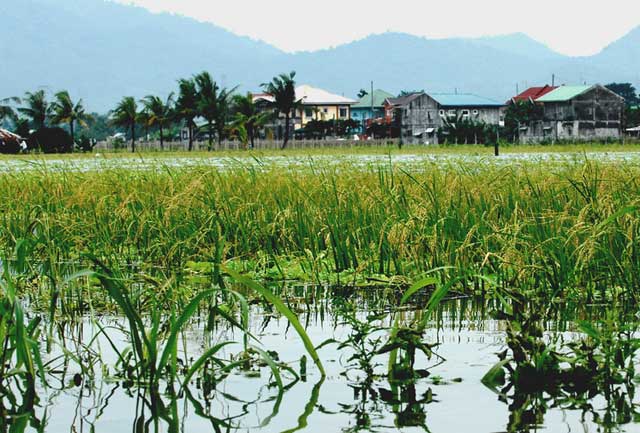Heavy rainfall
What it does
 When rice fields experience heavy rainfall, freshly seeded fields tend to have poor distribution, germination, and emergence.
When rice fields experience heavy rainfall, freshly seeded fields tend to have poor distribution, germination, and emergence.
Why and where it occurs
The problem happens when heavy rain falls on freshly seeded fields and is worse if the field has been wet direct-seeded. The problem tends to be worse in heavy textured soils.
How to identify
Direct-seeded fields affected by heavy rainfall have poor plant stand, especially if wet direct seeded.
The pattern of damage is usually general across the entire field but may be more obvious in low spots.
Various problems can affect crop planting or establishment. These are cloddy soil, seed too deep, soil too soft at seeding, heavy rainfall at seeding, soil crusting, poor seed quality, poor seed distribution, low seed rate, water stress, muddy water at seeding, clogged seeder and/or pests such as ants, birds and rats that remove seeds at planting.
To confirm the cause of problem, ask the farmer if the field was directly seeded, and when it was seeded relative to the rainfall.
Why is it important
Heavy rainfall during planting or crop establishment is becoming an increasingly important problem as wet direct seeding spreads throughout Asia. Because of the nature of the problem it tends to be seasonal and cannot really be reliably predicted. When it occurs, fields need to be re-plowed and re-seeded.
How to manage
The critical time is during the first two days after sowing. Heavy rainfall is much worse on wet direct-seeded fields. To manage:
- Perform surface seeding.
- Ensure good field drainage.







